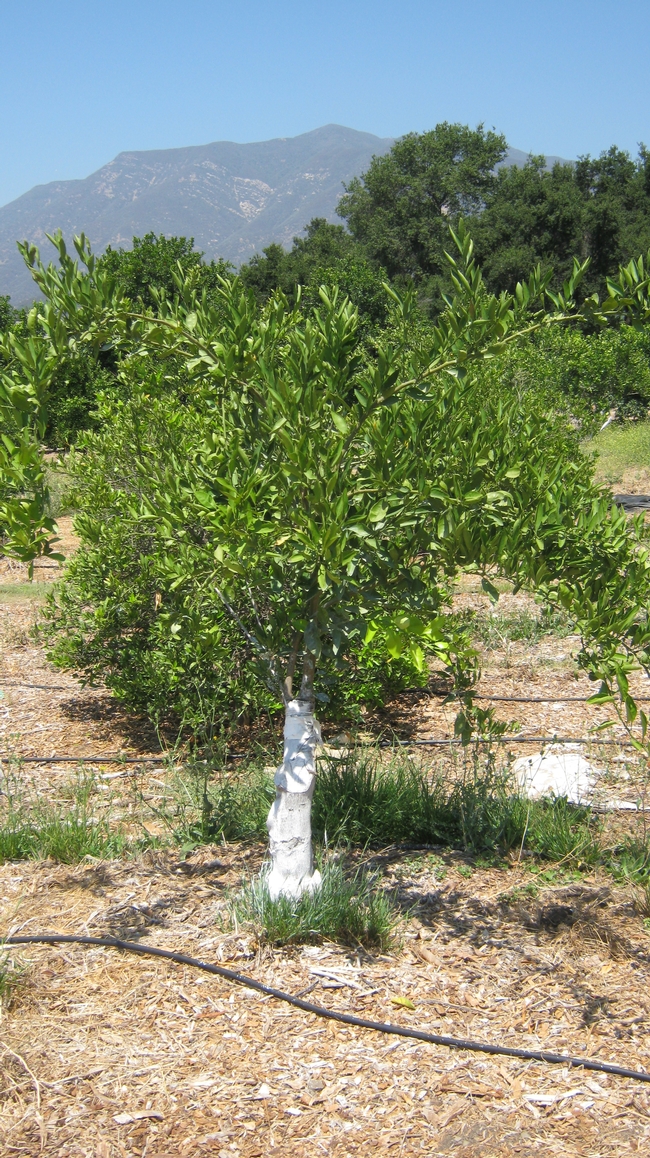'Pixie' mandarin is a very vigorous, upright tree. Although the fruit is small, hence its name, it can produce fruit on the ends of long branches which deform the canopy structure, making it hard to pick. The sweet, seedless fruit is worth picking, though. The rootstock standards for this small industry are ‘Citrumelo' and ‘C-35' citrange. The industry is looking for alternatives to these choices, especially those that reduce the vigor of the trees.
There is no one ideal rootstock at this point and growers have the option of a wide range of choices. The search includes those that are resistant to Citrus Tristeza Virus (CTV), Phytophthora, calcareous soils and ideally one that is resistant to the bacteria that causes Huanglongbing.
In many California coastal growing areas, land is expensive, water scarce and costly and prone to calcareous soils that are derived from marine sediments which can bring on iron chlorosis. Growers are also looking for smaller trees that will give early economic returns, are easier to prune and pick, and may be more compatible with the economics driven by Huanglongbing.
‘Citrumelo' citrange yields a large tree with good quality and quantity of fruit. It is tolerant of CTV (Citrus tristeza virus) and Phytophthora spp, but is susceptible to iron chlorosis in high pH soils. ‘C-35' citrange is a smaller tree than Citrumelo, also has resistance to Phytophthora spp and CTV, and is more tolerant of high pH soils.
The USDA had a breeding program in California which was taken over by the University of California. Out of this breeding project, the university selected three rootstocks for release in 2009 because of their horticultural characteristics, such as dwarfing, although not as much as ‘Flying Dragon' trifoliate, resistance to CTV and tolerance of calcareous soils. These three rootstocks also show good tolerance to Phytophthora parasitica and nematodes.
Pixie growers have been looking for a more compact tree, easier to handle and not need so much pruning. They funded a long-term project to see how these newer selections of rootstock performed in their area which has a hot summer/cool winter. A 2014 planting of ‘Pixie' has been evaluating the size reducing effects of the relatively new rootstocks ‘Bitters' citrange, ‘Carpenter' citrange and ‘Furr' citrange. After two years, ‘Pixie' on ‘Citrumelo' is the largest tree. Of the new rootstocks, ‘Furr' is the largest and ‘Bitters' the smallest. The trial was replicated at two sites with two different pH soils. At one site with the highest soil pH, ‘Bitters' showed iron chlorosis.
Photo: long whip growth on 'Pixie'
Attached Images:
